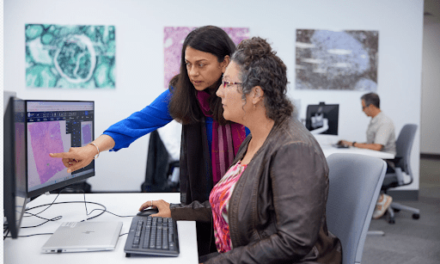This is a companion article to the feature “Improving Cancer Outcomes with Precision Medicine.”
Underlying everything that makes the CancerLinQ system work is patient data—and lots of it. CancerLinQ is a health information technology platform that makes possible customized physician inquiries about the diagnosis and treatment of cancer patients with specified characteristics. The platform is designed specifically to aggregate and analyze large amounts of patient data.
Data collection begins from the time a clinical laboratory or pathology practice performs diagnostic tests on specimens from an individual patient. Such tests may include the full range of methodologies employed in current oncology practice, including molecular diagnostics performed on blood or other body fluids, and anatomic and digital pathology studies performed on tissue biopsy specimens. The results of such tests are typically stored in the patient’s electronic health record (EHR) at the oncology practice or clinic.
In the past, placement in the patient’s EHR would have been the end of the road for most test results. But CancerLinQ is seeking to change that paradigm by making it possible for deidentified patient data to be shared among participating oncologists who can use its lessons to improve treatments for their own patients.
CancerLinQ currently includes more than 60 medical practices that have signed participation agreements. A fundamental part of an organization’s participation includes transferring diagnostic lab data collected from their patients into the CancerLinQ database. “Whatever diagnostic tests are in a patient’s EHR are then imported into CancerLinQ, as these test results are in a data type that CancerLinQ can ingest and process,” says Robert S. Miller, MD, FACP, FASCO, medical director of CancerLinQ.
For data analysis, CancerLinQ provides a data exploration and cohort creation tool called CancerLinQ Insights, which uses SAP Medical Research Insights (MRI) technology. This technology has simple statistical tools to allow physicians or other CancerLinQ users to ask fairly customized questions and search the anonymized database. For example, physicians can run measures of central tendency in order to gather a data set of continuous variables that can calculate the median and interquartile range.
The CancerLinQ team also gives thought to how patient data can best be provided to guide practitioners. “Internal teams, including clinicians at CancerLinQ, as well as external advisors such as our physician advisory committee, create context around lab-based diagnostic data and advise on how best to present it to end-users of CancerLinQ,” says Miller.





